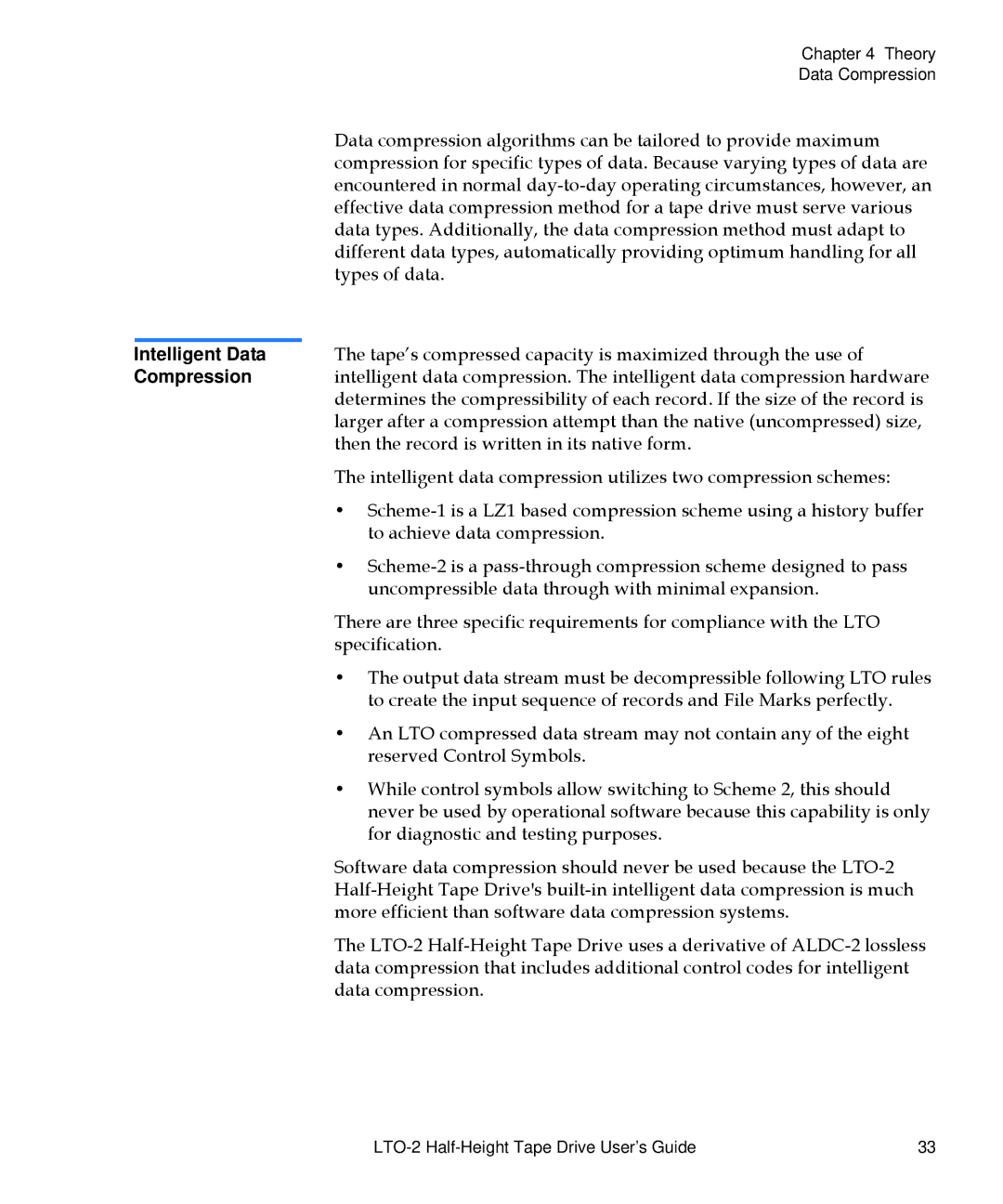Chapter 4 Theory
Data Compression
|
| Data compression algorithms can be tailored to provide maximum |
|
| compression for specific types of data. Because varying types of data are |
|
| encountered in normal |
|
| effective data compression method for a tape drive must serve various |
|
| data types. Additionally, the data compression method must adapt to |
|
| different data types, automatically providing optimum handling for all |
|
| types of data. |
| The tape’s compressed capacity is maximized through the use of | |
| Intelligent Data | |
Compression | intelligent data compression. The intelligent data compression hardware | |
|
| determines the compressibility of each record. If the size of the record is |
|
| larger after a compression attempt than the native (uncompressed) size, |
|
| then the record is written in its native form. |
|
| The intelligent data compression utilizes two compression schemes: |
|
| • |
|
| to achieve data compression. |
|
| • |
|
| uncompressible data through with minimal expansion. |
|
| There are three specific requirements for compliance with the LTO |
|
| specification. |
|
| • The output data stream must be decompressible following LTO rules |
|
| to create the input sequence of records and File Marks perfectly. |
|
| • An LTO compressed data stream may not contain any of the eight |
|
| reserved Control Symbols. |
|
| • While control symbols allow switching to Scheme 2, this should |
|
| never be used by operational software because this capability is only |
|
| for diagnostic and testing purposes. |
|
| Software data compression should never be used because the |
|
| |
|
| more efficient than software data compression systems. |
|
| The |
|
| data compression that includes additional control codes for intelligent |
|
| data compression. |
33 |
